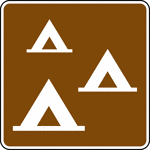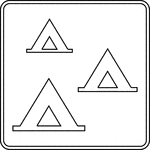Clipart tagged: ‘tents’
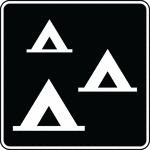
Group Camping, Black and White
This sign is used to indicate that a group campground is located nearby.

Fort Hatteras
View of the camp of the twentieth Indiana Regiment; also of Fort Hatteras and the anchorage at Hatteras…

Hilton Head
"Exterior view of fortifications erected by the Federal troops at Hilton Head, Port Royal. S. C. Hilton…
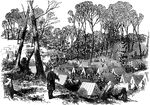
Camp of Ninth Massachusetts
"Camp of the Ninth Massachusetts Regiment in the woods, one mile from the Confederate fortifications,…

Officer's Tents
"New Jersey Camp at Arling, Va., designated as Camp Princeton in honor of one of the Revolutionary battle…

Rolla Camp
"Encampment of the Federal army near Rolla, Mo. The city of Rolla has been famous since the death of…
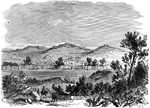
Saratoga and Stillwater - Encampments of Burgoyne's Army
Encampments of Burgoyne's army, Saratoga and Stillwater.

A Scene In Arabia
An illustration of an outdoor scene in ancient Arabia. Pictured are camels, shepherds, and others going…

Stockades at Newport News
"Erecting stockades at Newport News, Va., by the Federal Troops, June 1861."— Frank Leslie, 1896

Tent
A pavilion or portable lodge of canvas or other coarse cloth, stretched and sustained by poles, for…

Thoroughfare Gap
"Thoroughfare Gap, Va., a pass in the mountains on the Manassas Gap Railroad, near Strasburg, held by…

Zouaves
"Encampment of Colonel Ellsworth's New York Fire Zuoaves, on the heights opposite the Navy Yard, Washington,…

